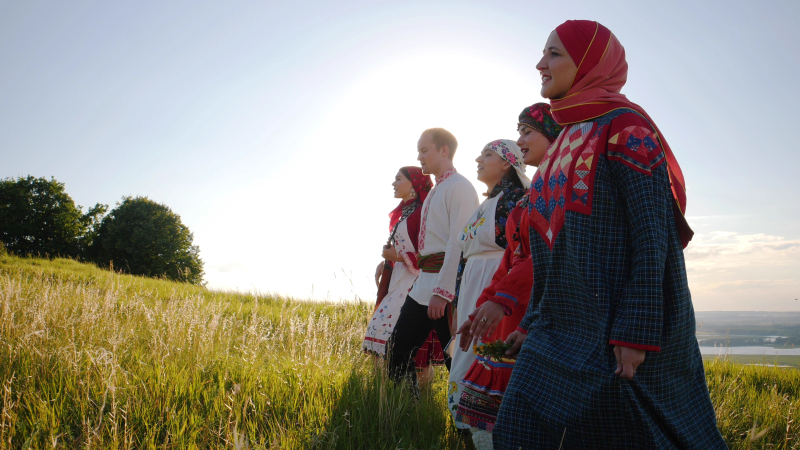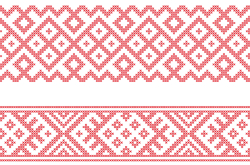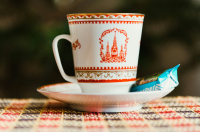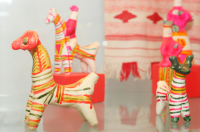When it comes to male traditional costume, the most eye-catching item is a type of linen or hemp shirt called a kosovorotka (from kosoy vorot – “skewed collar”). According to researchers, its history goes back to as early as the 11th century, and since then it had continued to grow more and more popular, since it was easy to sew and comfortable to wear.
As it goes with most folklore-related stuff, kosovorotkas had not only utilitarian functions, but also some symbolism behind them. These shirts, as well as accompanying textile belts, were often embroidered with ancient symbols, some of which we’ve discussed here. Moreover, the prominent Russian researcher Dmitry Likhachev suggested that the skewed collar may have had a special purpose – to prevent one’s neck-worn Christian cross from falling out when the wearer bent during work.
Another staple of folk Russian fashion are lapti – bark shoes. They were worn with portyanki (textile foot wraps), to which they were tied with a rope. These shoes weren’t made to last: one pair was good to use for just about a week, but it wasn’t much of a problem because they didn’t cost much and could be made at home. Lapti, they say, worked especially well on wet ground, as they didn’t get filled with water and dried fast afterwards.
Among the traditional clothing items worn by women, the most versatile one was sarafan – a kind of jumper dress. They came in all kinds of cuts, colors, and decorative elements, depending on the region, the person wearing it – a girl or a married woman – and the occasion. Sarafans were accompanied by an underskirt and an ankle-length shirt.
And of course, the Russian female folk costume cannot be imagined without hair accessories, the most recognizable of which is the tall crest-shaped kokoshnik. They were heavily embroidered with pearls, beads, or gems, as kokoshniks were worn only on festive occasions. In daily life, wearing your hair down was frowned upon, too, especially for married women, so it was often covered with other, less pompous headdresses, such as povoinik and a shawl.
Thanks to modern designers who are inspired by these and other items of folk clothing, traditional fashion lives on. If you’d like to see a modern spin on the costumes of the past, check out our previous related stories: Modern Brands Inspired by Russian Culture and Folklore: Part I and Part II.




